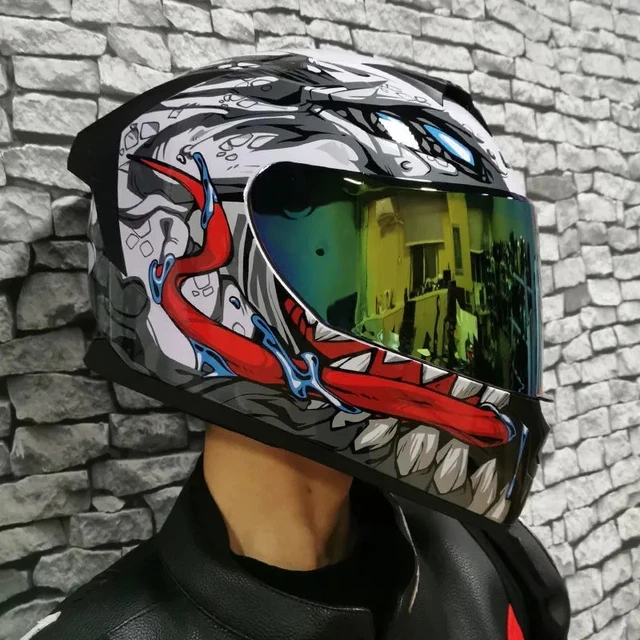Introduction:
Motorcycle helmets are essential protective gear for riders, offering crucial head protection in the event of accidents or collisions. There are various types of motorcycle helmets available in the market, each with its own unique features and levels of protection. In this article, we will explore the three main types of motorcycle helmets: full-face helmets, open-face helmets, and modular helmets. We will discuss their design, advantages, disadvantages, and the type of riders they are best suited for.
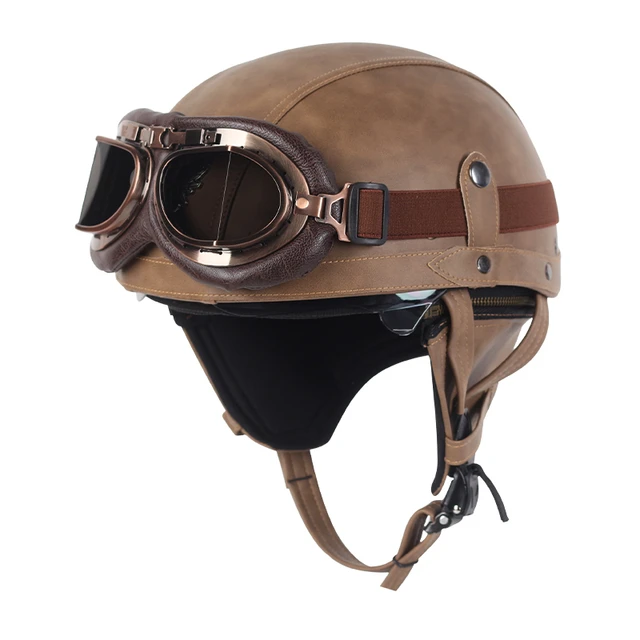
What are the three types of motorcycle helmets?
Full-Face Helmets:
Full-face helmets provide the most comprehensive coverage and protection for riders. They feature a complete enclosure that covers the entire head, including the chin and face. Full-face helmets are favored by many riders due to their superior safety features and aerodynamic design.
Design and Features:
Full-face helmets are characterized by their one-piece construction, which incorporates a chin bar, face shield, and ventilation system. The chin bar offers protection to the rider’s lower face and jaw, while the face shield provides a clear and scratch-resistant visor to shield the eyes from wind, debris, and UV rays. The ventilation system typically includes intake and exhaust vents to regulate airflow and prevent fogging.
Advantages:
Maximum Protection: Full-face helmets offer the highest level of protection compared to other helmet types. The complete enclosure significantly reduces the risk of facial injuries, abrasions, and impact-related head trauma during accidents or collisions.
Aerodynamics: The streamlined design of full-face helmets enhances aerodynamics, reducing wind resistance and minimizing buffeting at high speeds. This feature contributes to rider comfort and stability, particularly during sport or performance riding.
Noise Reduction: Full-face helmets provide better noise reduction compared to open-face helmets, thanks to their sealed construction. This reduces wind noise and allows for a quieter and more comfortable riding experience.
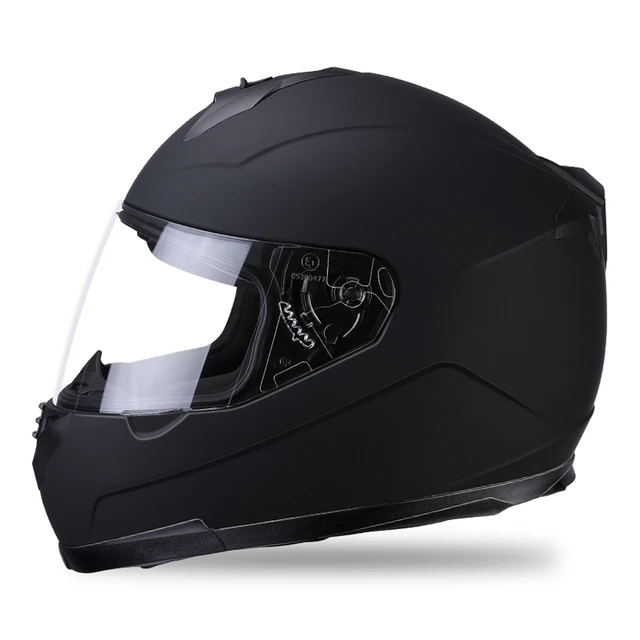
Disadvantages:
Restricted Field of Vision: The enclosed nature of full-face helmets can limit peripheral vision compared to other helmet types. Riders may need to turn their heads more to check blind spots, especially during lane changes or in busy traffic situations.
Ventilation Limitations: The ventilation system in full-face helmets may not provide as much airflow as open-face helmets. This can result in increased heat and moisture buildup, especially during hot weather or extended periods of riding.
Best Suited For:
Full-face helmets are ideal for riders who prioritize maximum safety, especially those engaged in sport riding, racing, or long-distance touring. They are suitable for riders who desire complete head protection, enhanced aerodynamics, and reduced wind noise.
Open-Face Helmets:
Open-face helmets, also known as three-quarter helmets, provide coverage to the top, sides, and back of the head, but lack a chin bar. They offer a more open and breathable feel compared to full-face helmets, making them a popular choice among casual and urban riders.
Design and Features:
Open-face helmets feature a shell that covers the top, sides, and back of the head, leaving the face uncovered. They typically have a visor or face shield that provides protection against wind, debris, and sunlight. Some models may have a removable visor, allowing riders to customize their level of protection.
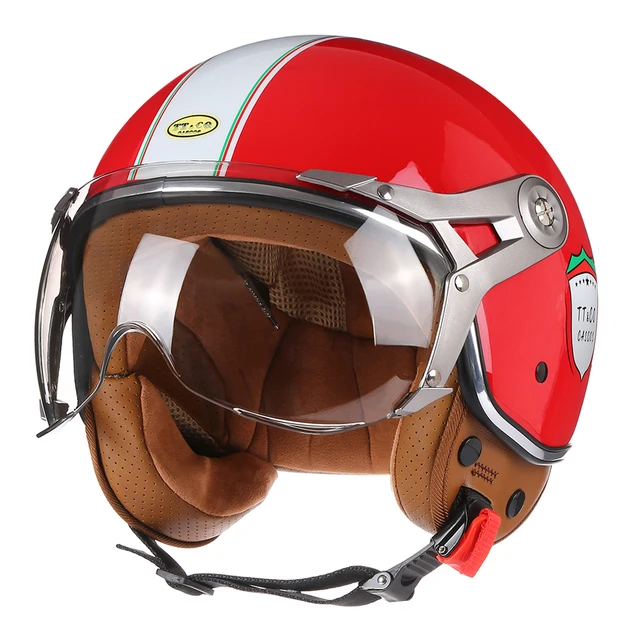
Advantages:
Increased Visibility: Open-face helmets provide a wider field of vision compared to full-face helmets. Riders can have a greater peripheral view, allowing for improved situational awareness and ease of checking blind spots.
Ventilation: Open-face helmets offer better ventilation compared to full-face helmets due to their partial coverage. The open design allows for increased airflow, reducing heat buildup and providing a cooler and more comfortable riding experience.
Easy Communication: Open-face helmets facilitate clearer communication between riders and passengers or pedestrians, as the face is visible, making lip reading and non-verbal cues more accessible.
Disadvantages:
Reduced Facial Protection: The absence of a chin bar in open-face helmets leaves the rider’s face exposed to potential injuries during accidents or collisions. This lack of protection increases the risk of facial abrasions, fractures, or impact-related injuries.
Increased Noise: Open-face helmets often produce more wind noise compared to full-face helmets. This can lead to discomfort, fatigue, and potential damage to hearing over extended periods of riding.
Best Suited For:
Open-face helmets are well-suited for riders who prioritize increased visibility, a greater sense of freedom, and a more casual riding experience. They are popular among urban riders, scooter riders, and cruisers, who value comfort, ventilation, and easy communication while accepting the reduced facial protection compared to full-face helmets.
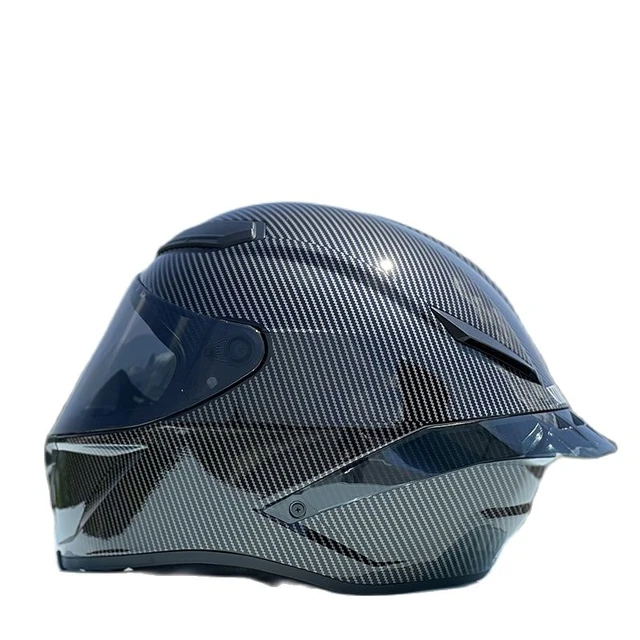
Modular Helmets:
Modular helmets, also known as flip-up helmets or convertible helmets, provide the versatility of both full-face and open-face designs. They feature a hinged chin bar that can be flipped up, allowing riders to convert from full-face to open-face style without removing the entire helmet.
Design and Features:
Modular helmets have a unique design that combines the benefits of both full-face and open-face helmets. They usually have a locking mechanism on the chin bar, which secures it in the closed position for full-face protection. When unlocked, the chin bar can be flipped up, transforming the helmet into an open-face configuration.
Advantages:
Versatility: The modular design of these helmets allows riders to easily switch between full-face and open-face configurations, providing versatility for various riding scenarios. This flexibility is particularly useful for riders who want the option of increased ventilation and convenience without compromising on safety.
Improved Communication: With the chin bar flipped up, riders can communicate more easily with others without having to remove the entire helmet. This makes it convenient for interactions with fellow riders, service station attendants, or during short stops without compromising on safety.
Ease of Use: Modular helmets provide the convenience of quick and easy access to the face, allowing riders to eat, drink, or have conversations without removing the helmet entirely.
Disadvantages:
Weight and Complexity: Due to the modular design and added hardware, these helmets are generally heavier compared to their full-face counterparts. The additional complexity makes them slightly more prone to mechanical issues or reduced durability over time.
Reduced Protection in Open-Face Configuration: When the chin bar is flipped up, modular helmets offer similar protection to open-face helmets. This exposes the rider’s face to potential injuries during accidents or collisions, similar to the limitations of open-face helmets.
Best Suited For:
Modular helmets are well-suited for riders who desire the convenience of both full-face and open-face configurations. They are suitable for riders who value versatility, convenience, and ease of communication, making them popular among tourers, commuters, and riders who frequently transition between urban and open-road environments.
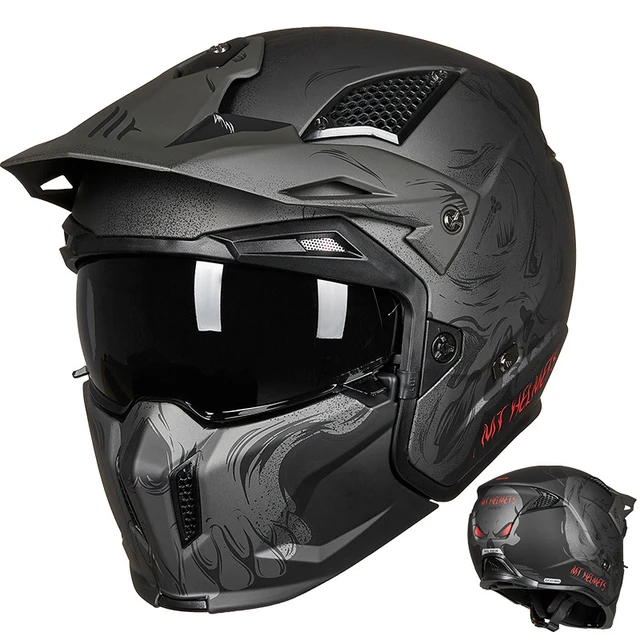
Conclusion:
Choosing the right type of motorcycle helmet depends on various factors, including personal preferences, riding style, safety considerations, and comfort requirements. Full-face helmets provide the highest level of protection and are well-suited for sport riders or those seeking maximum safety. Open-face helmets offer a more open and breathable feel, providing increased visibility and ventilation. Modular helmets offer the versatility of both full-face and open-face designs, allowing riders to switch between configurations based on their needs. Ultimately, selecting the appropriate helmet type requires careful consideration of your riding style, safety priorities, comfort preferences, and the specific advantages and limitations of each helmet type. Prioritize your safety and choose a helmet that meets or exceeds safety certifications while providing the desired level of protection and functionality for your riding adventures.

